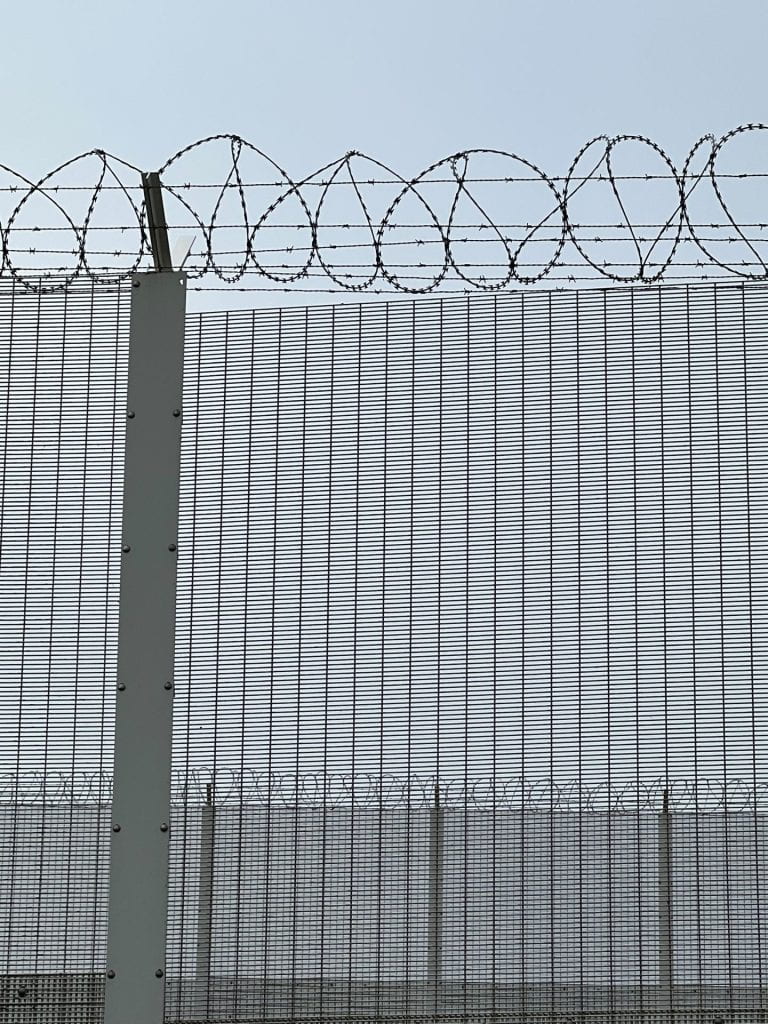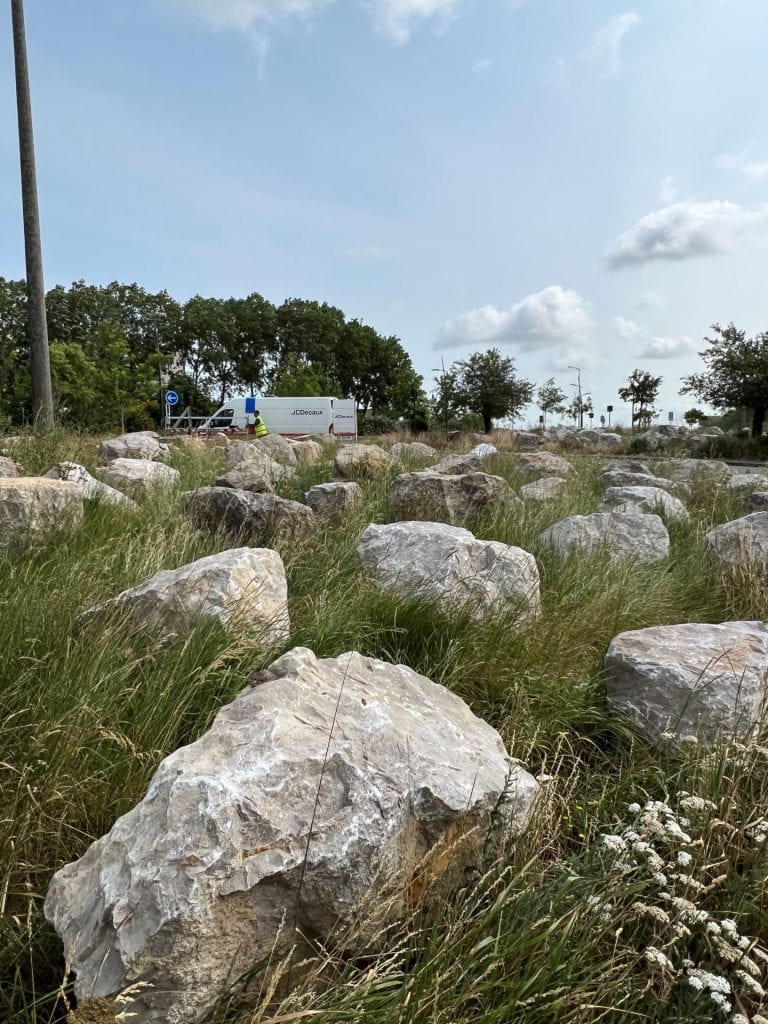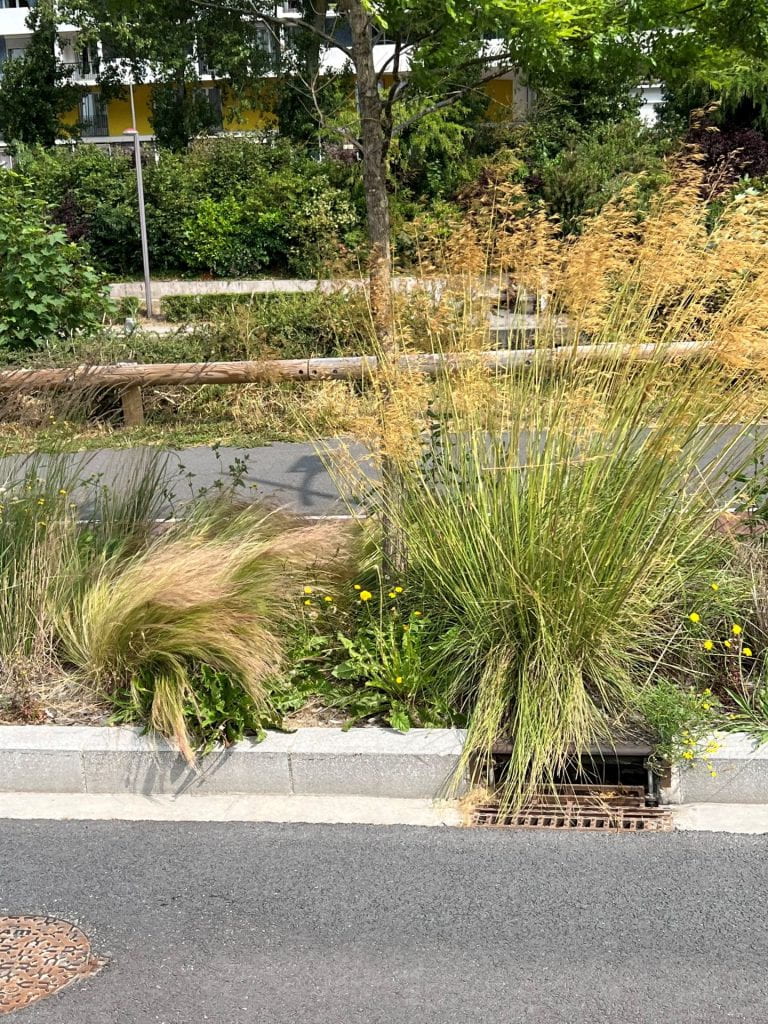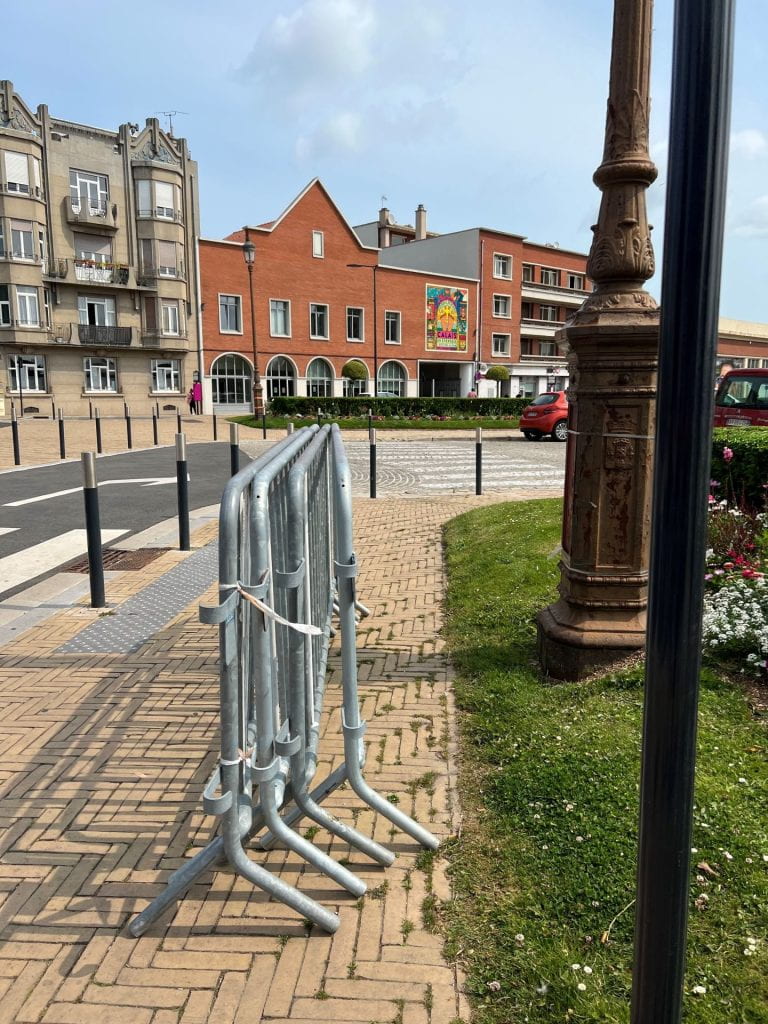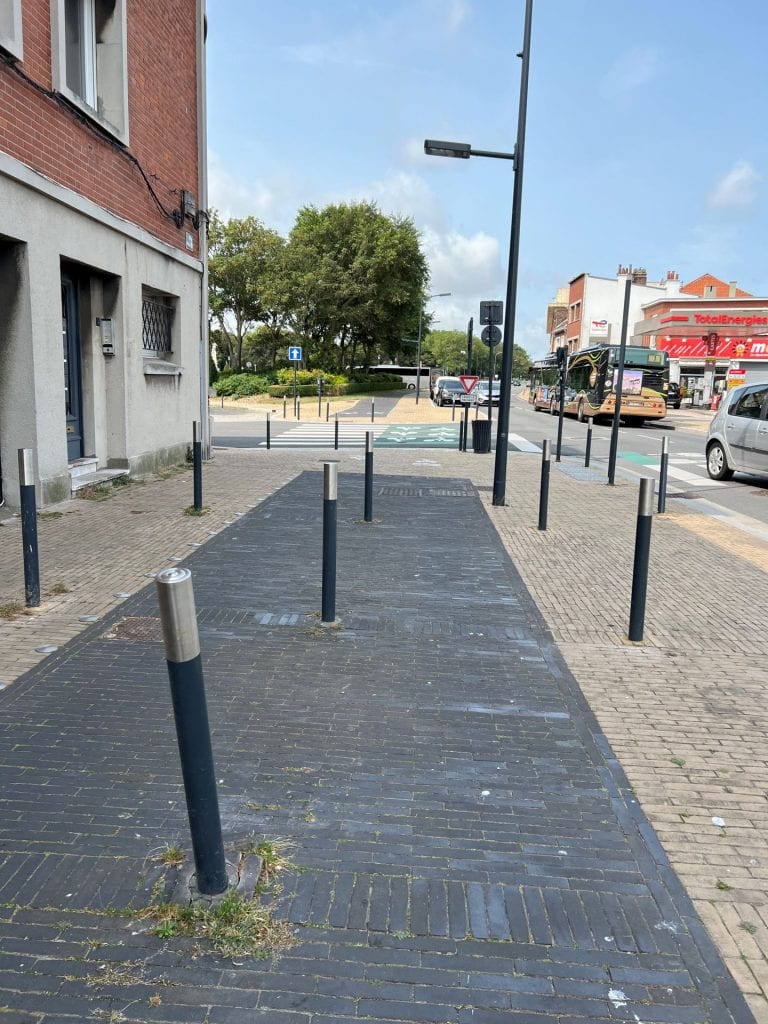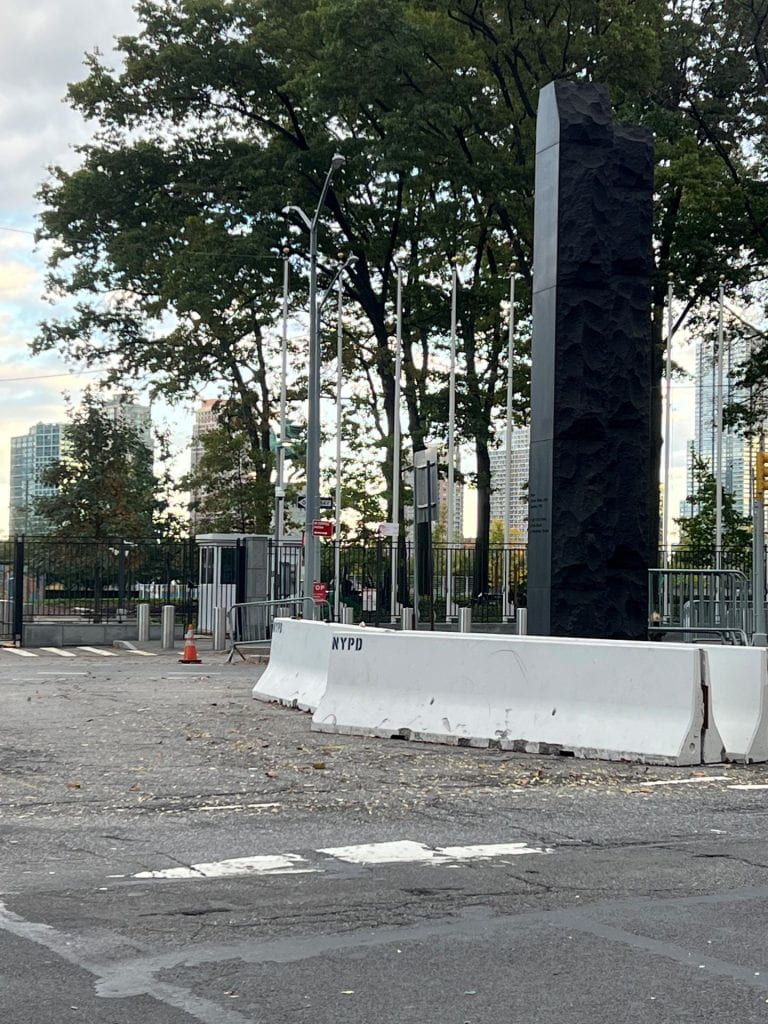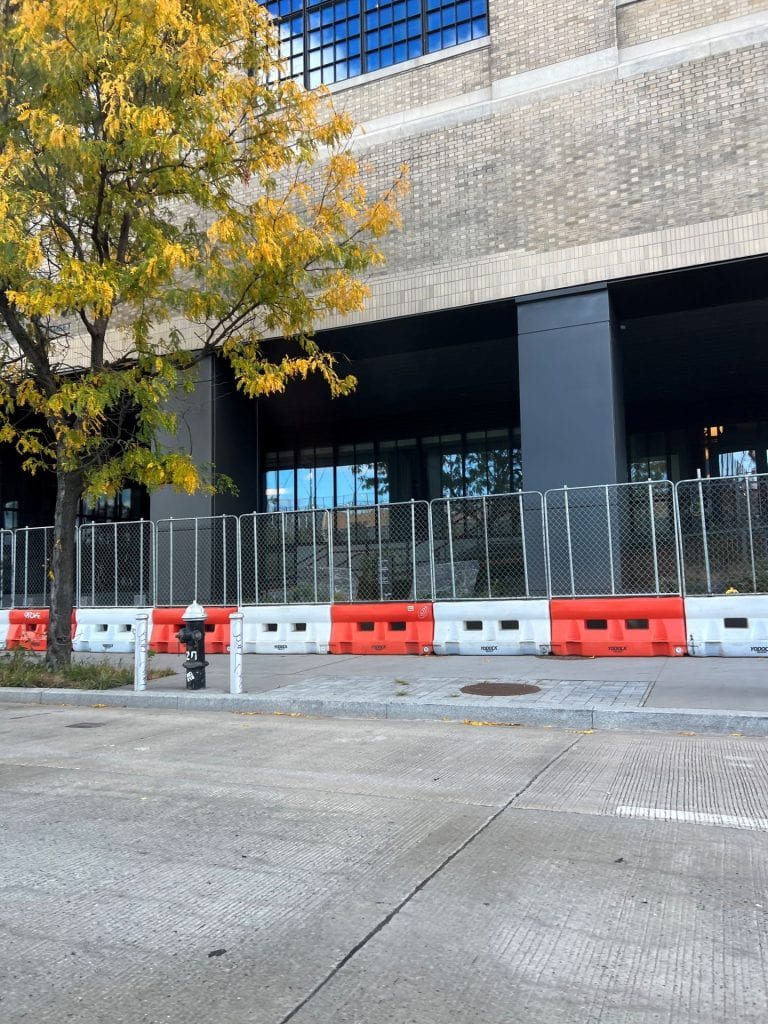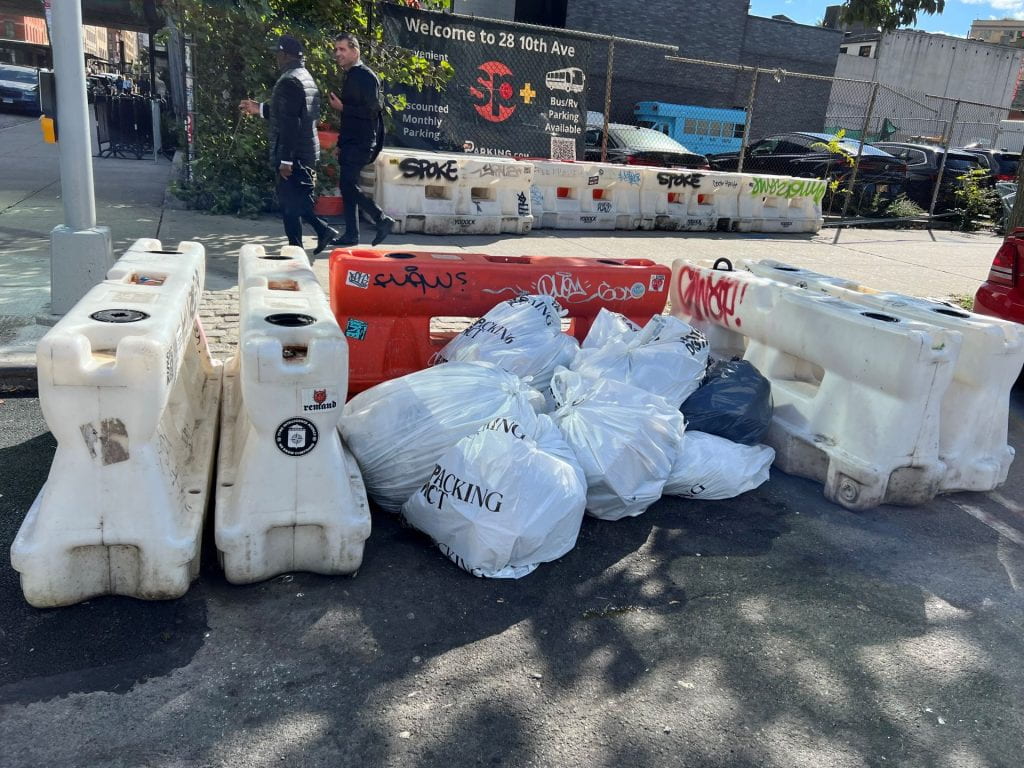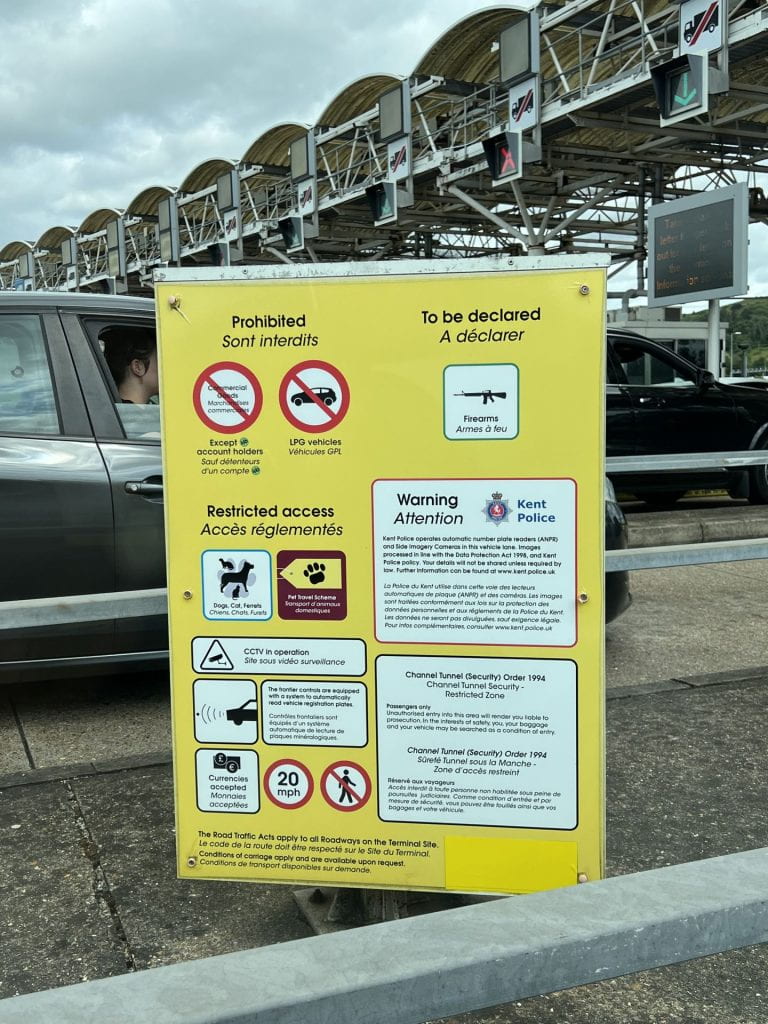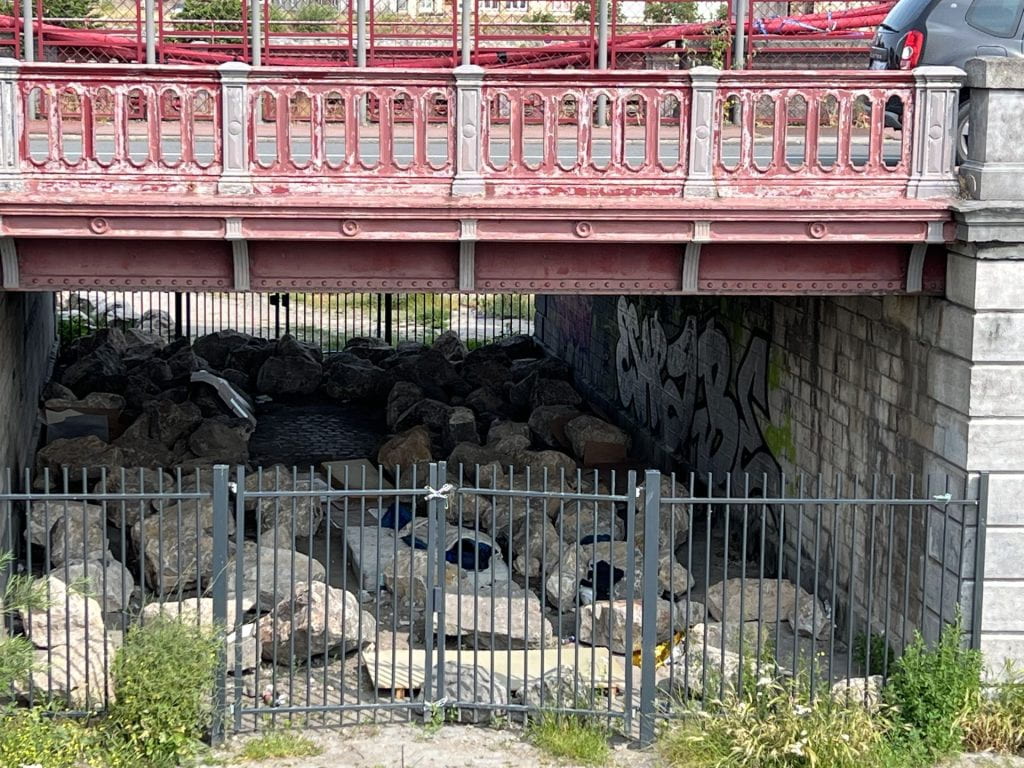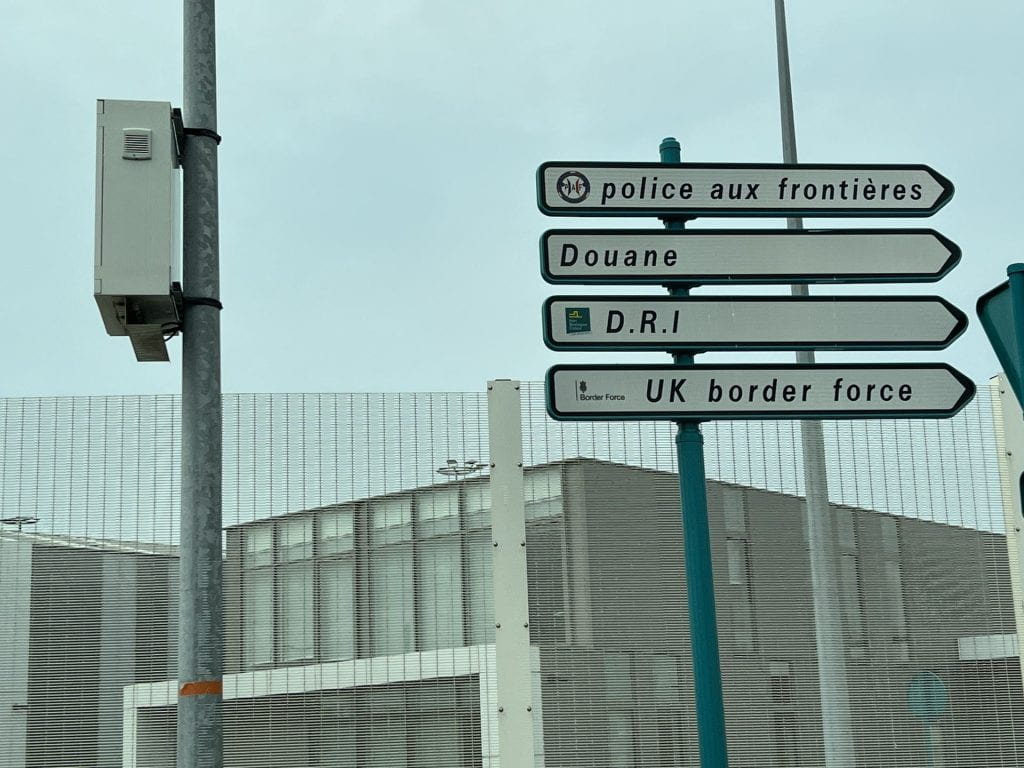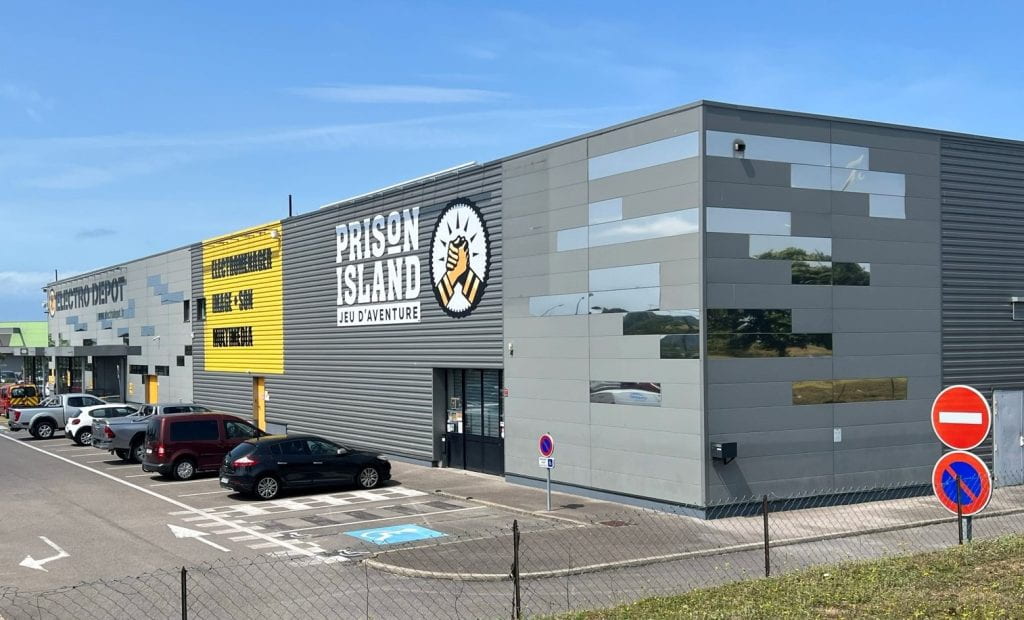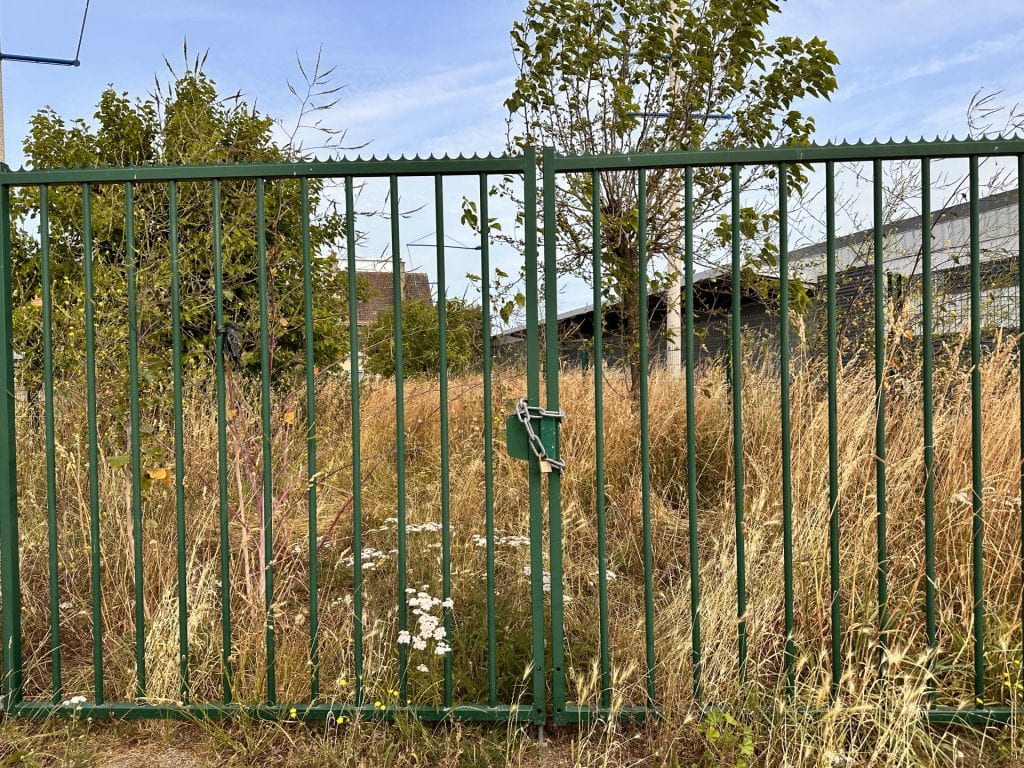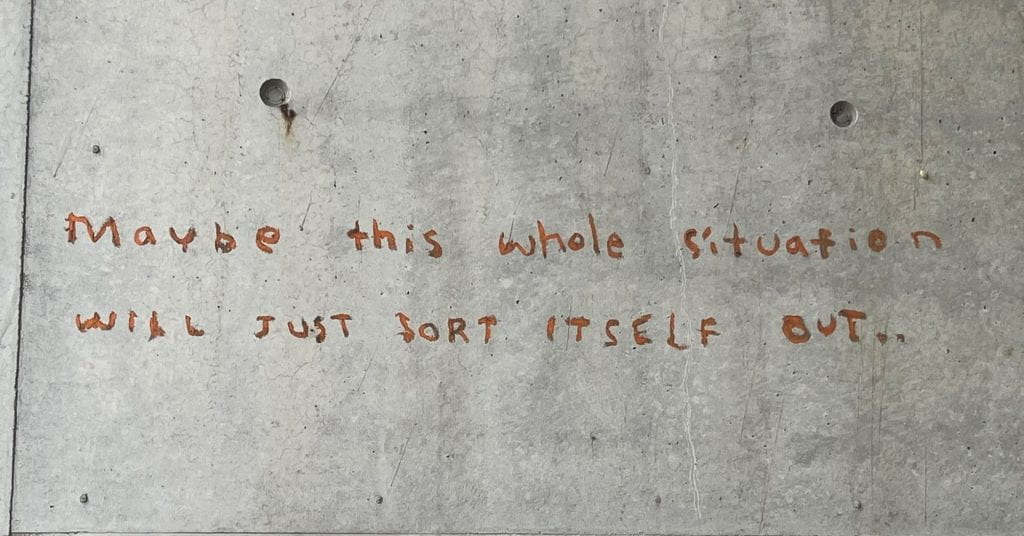Borderland Infrastructures – an MMB special series exploring the material and symbolic infrastructure of border regimes in the port cities of Calais and Dover.
By Radhika Subramaniam.
It was the boots that first caught my eye. They sat there, two or three, on a large table, looking in good nick, creased into a visible sense of comfort. Whether they were on view as available options or whether they had been tried on earlier that day wasn’t clear. The afternoon meal and distribution were done and people had dispersed. All around the table were crates, each labelled by size, piled with pairs of shoes, their laces knotting them together.
The boots were in the ‘warehouse’. Everyone called it that in English, and it was hard to know what to expect as we drove through quiet Calais streets lined with rocks, the ubiquitous ‘borderscaping’ to which Victoria Hattam has drawn attention. But warehouse it really was, a cavernous shed located on a side street, impeccably organized with every kind of personal gear. Clothes and shoes, children’s toys, electrical gear as well as sleeping bags, blankets, tents and logs were stacked in well demarcated zones. The stated purpose of L’Auberge des Migrants, which operates the facility in partnership with several other migrant support initiatives, is to be a logistical and humanitarian platform for people in exile, providing material support and advocacy. The warehouse (‘entrepôt’ in French on their website) in Calais is both a distribution centre for materials as well as for tinned food, hot meals and conversation.

I have been thinking a lot about feet of late, how their agency and mobility have been sedentarized into weighty, leaden traces to which the metaphors of carbon footprints, digital footprints and building footprints testify. But feet are meant to wander, making shoes a quintessential mobile technology. Foot coverings not only make it possible to go farther and faster; their lack can substantially hinder movement, especially in a world unfriendly to the bare foot. Even as shod feet are a mark of urbanity and civilization, unshod feet can come to signify poverty, unworldliness, even mental illness. For those who want to be on the move, who must travel atop variable surfaces, in different seasons, there are few needs more important than footwear. Those on the road who come to the warehouse look for boots, sneakers or trainers, and shower slippers.
Emptied personal belongings have a powerful charge. Artists and anthropologists have explored personal and political issues through the material artifacts of forced and voluntary migration – as, for instance, Ai Wei Wei’s public installations with orange life jackets or anthropologist Jason De Leon’s collections of backpacks, water bottles and photographs as part of the Undocumented Migration Project. Piles of shoes are some of the most gripping memorials of the Holocaust exhibited in the U.S. Holocaust Memorial Museum in Washington DC, Berlin’s Jewish Museum and Auschwitz. Imprinted with the residue of the person, they are also a reminder of a life’s extinguishment. In the warehouse, although the boots had been worn, they still looked purposeful.

Provisioning is not the only way shoes insert themselves into the cross-currents of migration politics. In 2005, Argentinean artist Judi Werthein premiered a project called Brinco as part of inSite, an organization that produced collaborative artistic projects and public interventions in the San Diego–Tijuana region of the U.S. –Mexico borderlands. Werthein launched a pair of sneakers under the trademark Brinco (Jump) to expose the differential policies and contradictions that impact and control international borders, labour and migration. The sneakers were outfitted with a mini-compass, a flashlight, insoles that doubled as a map indicating the best crossing points and alerting people to treacherous terrain, the image of a saint of migrants and a pocket for money or painkillers. In Tijuana, Werthein distributed the sneakers for free to migrants intending to cross the border, while on the U.S. side they were sold in an exclusive boutique as a limited-edition art object. She had the sneakers manufactured in China to underscore how the transnational movement of cheap goods and commodities works in direct opposition to the regulations and barriers to the movement of people. The project sparked controversy and personal threats to the artist, opposed by those who felt she was aiding and abetting illegal immigration.
In June 2018, Oxfam released a briefing paper Nowhere But Out about the failure of the French and Italian authorities to help refugees and migrants stranded in the Italian town of Ventimiglia. France had re-established border controls in 2015, effectively suspending the free movement guaranteed between Schengen states. Many of those who crossed the border into France were being returned to Italy. The report accused the French border police of forms of callous violence, such as confiscating mobile phones and SIM cards and forcing people to return on foot. The report also quoted the Oxfam Open Europe project leader, Chiara Romagna, who said, ‘Some children even had the soles of their shoes cut off, before being sent back to Italy.’ Of course, evoking the child victim is a humanitarian trope that draws on what Miriam Ticktin identifies as the innocence they embody. Still, surely some children could be carried, shoes or not. Even as routine border violence goes, cutting off the soles of shoes is inept and strangely spiteful. Why target shoes?
These boots are made for walkin’, as the song goes. Tents and backpacks might be as snail shells, the homes we carry, but shoes are emphatically not houses for feet. To the footloose and footsore alike, they kick at the heels and in so doing, they seem to kick up enough dust to strike a political nerve. There is more symbolic heft knotted into those laced boots than we imagine – and a resolute and relentless drive to movement in every ordinary pair of feet.






